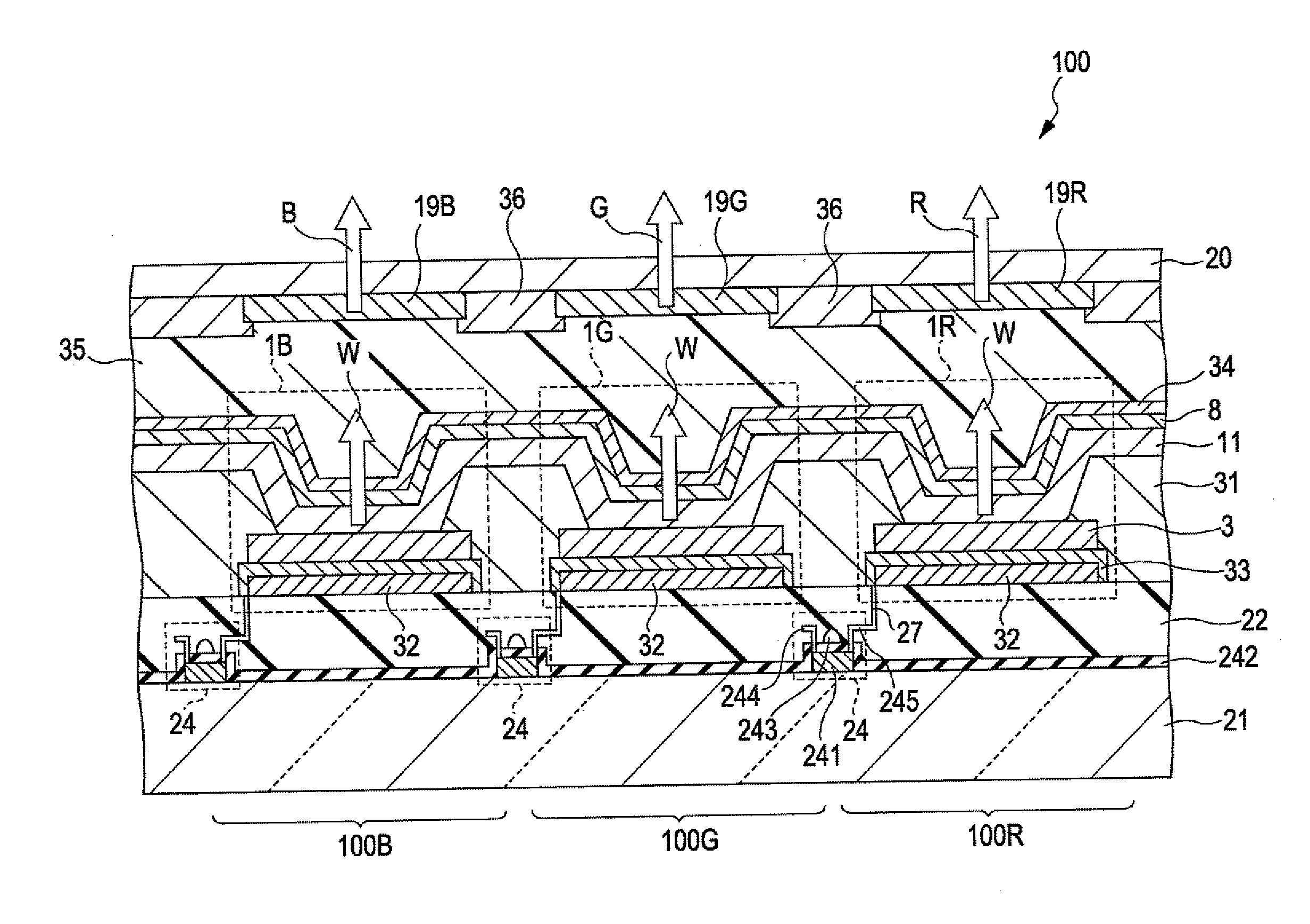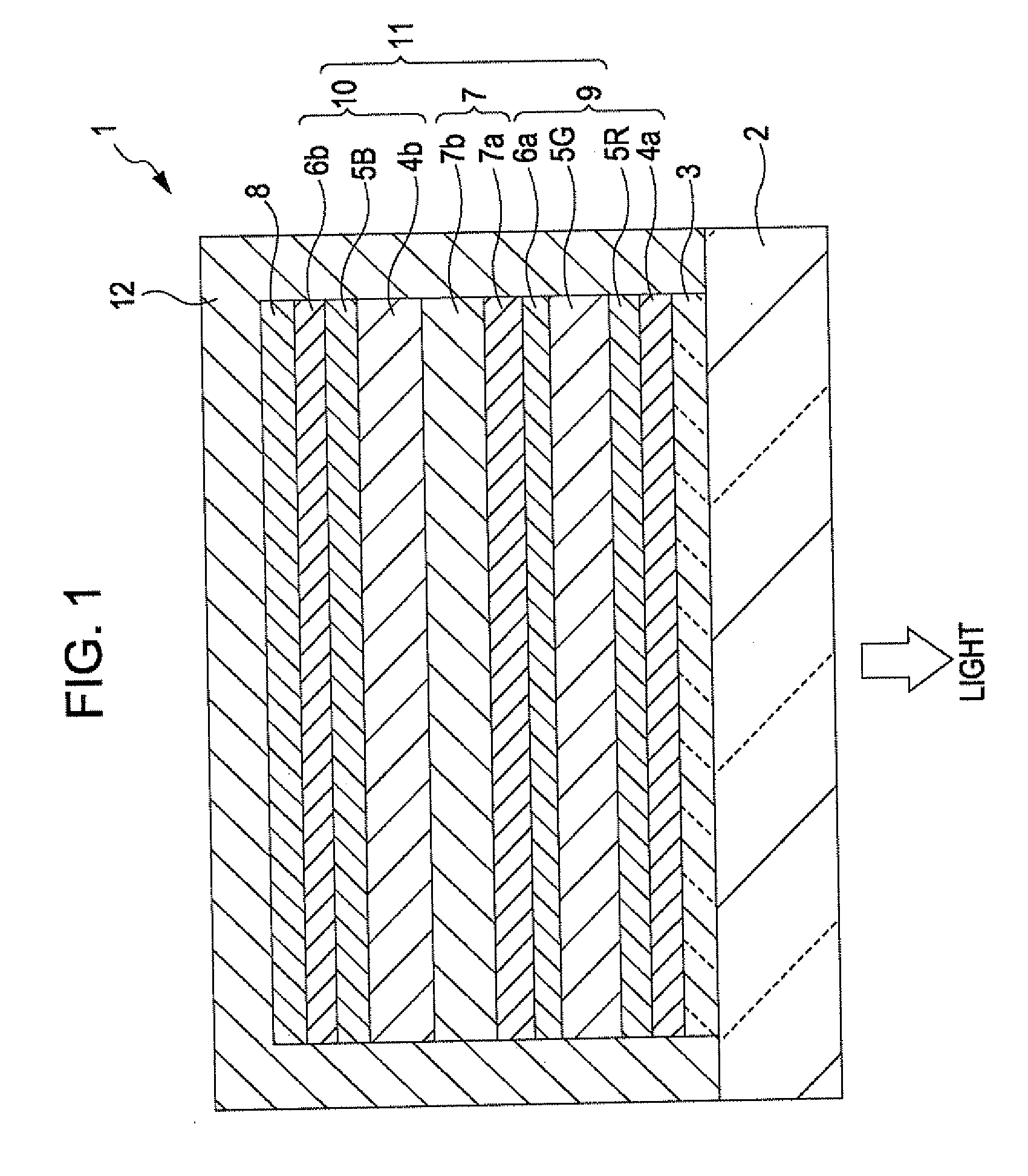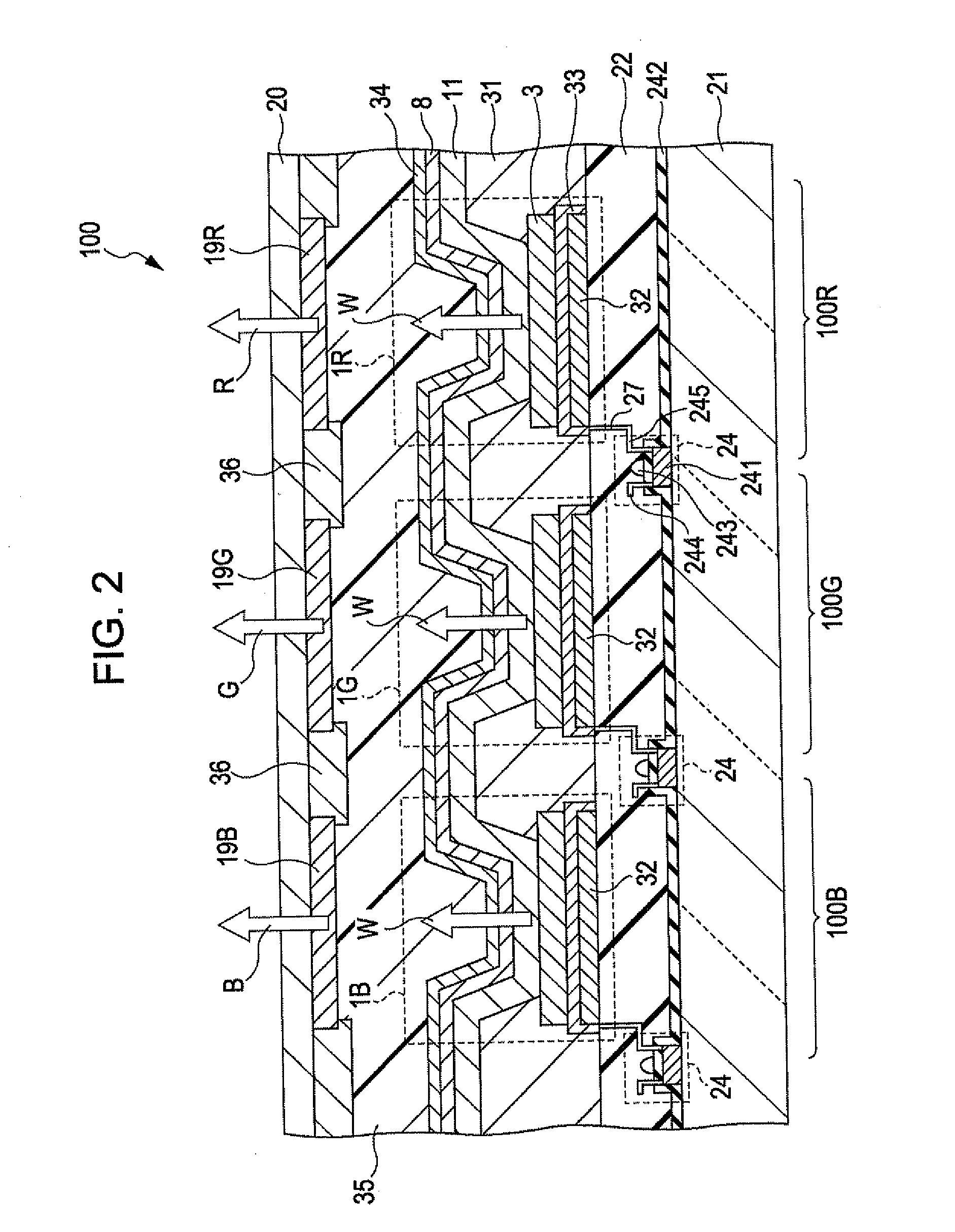Light-emitting device, display device, and electronic apparatus
a technology of light-emitting devices and electronic devices, which is applied in the direction of thermoelectric devices, discharge tube luminescnet screens, organic semiconductor devices, etc., can solve the problems of reducing the life of light-emitting devices, and achieve the effect of high-reliability electronic devices
- Summary
- Abstract
- Description
- Claims
- Application Information
AI Technical Summary
Benefits of technology
Problems solved by technology
Method used
Image
Examples
examples
[0223]Examples of embodiments of the invention will be specifically described.
1. Manufacturing Yellow Light-Emitting Device
first example
First Process
[0224]A transparent glass substrate having an average thickness of 0.5 mm was prepares. An ITO electrode (anode) was formed on the substrate by a spattering technique so as to have an average thickness of 100 nm.
[0225]The substrate was dipped in acetone and then in 2-propanol and was subjected to ultrasonic cleaning. Then, the resultant substrate was subjected to oxygen plasma processing.
Second Process
[0226]Subsequently, a first hole transport layer was formed on the ITO electrode by a vacuum deposition method so as to have an average thickness of 50 nm, the first hole transport layer being made of N,N′-di(1-naphthyl)-N,N′-diphenyl-1,1′-diphenyl-4,4′-diamine (NPD).
Third Process
[0227]Subsequently, a yellow light-emitting layer was formed on the first hole transport layer by a vacuum deposition method so as to have an average thickness of 30 nm, the yellow light-emitting layer containing the following materials.
[0228]The materials of the yellow light-emitting layer employ...
second example
[0242]In the fifth process, the material of the n-type electron transport layer employed a mixed material of tris(8-quinolinolato)aluminum (Alq3) and lithium oxide (Li2O), and the amount of the lithium oxide (Li2O) contained in the mixed material was configured to be 0.5% (volume ratio). The other process configurations were provided as in the case of the first example, thereby manufacturing a light-emitting device.
PUM
 Login to view more
Login to view more Abstract
Description
Claims
Application Information
 Login to view more
Login to view more - R&D Engineer
- R&D Manager
- IP Professional
- Industry Leading Data Capabilities
- Powerful AI technology
- Patent DNA Extraction
Browse by: Latest US Patents, China's latest patents, Technical Efficacy Thesaurus, Application Domain, Technology Topic.
© 2024 PatSnap. All rights reserved.Legal|Privacy policy|Modern Slavery Act Transparency Statement|Sitemap



